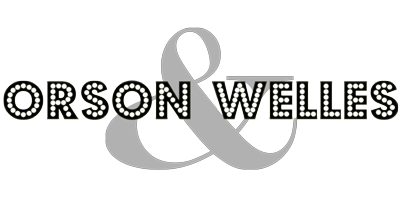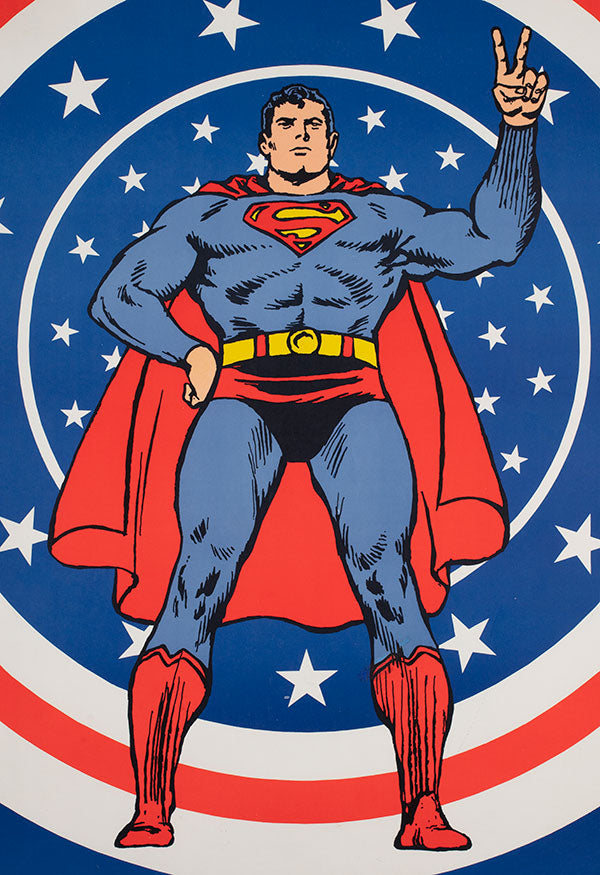Your Cart is Empty
Free Shipping UK (and Worldwide for orders over £250)
Menu
-
- Home
- Shop
- About Us
- Have Questions?
- Wonderwall
- MrBlackCatSmokey
-
- Contact Us
- +44 7979 510021
- Login
-
United Kingdom (GBP £)

Free Shipping UK (and Worldwide for orders over £250)
Lookbooks
Each of our carefully researched, styled, tested and distributed collections reflects a particular aesthetic and ethos. We hope some of these speak to your own style, and help you refine and redefine your own look and style philosophy in the process.
Each of our carefully researched, styled, tested and distributed collections reflects a particular aesthetic and ethos. We hope some of these speak to your own style, and help you refine and redefine your own look and style philosophy in the process.
Linea Collection
Eclipse Collection
Arizona Collection

Poster FAQ
-
Poster purchases at Orson & Welles are 100% safe, we only sell original posters.
All of our film posters are original theatrical film posters printed in limited quantity that were either displayed (used) or were meant for display (unused) in cinemas at the time the films were shown.
All of our other vintage posters are original for their use as described on the site, be it a vintage commerical print or limited editions.
We do not sell reproductions of any kind.
Additionally, Certificates of Authenticity (COAs) are provided with all of our posters. They are especially nice if the poster is intended as a gift.
We also have a no quibble returns policy so you can always return the poster to us if not completely satisifed, as long as we do not arrange for it to be linen-backed or framed for you (check out our Returns Policy for full details).
-
A reproduction poster can cost a few pounds, whereas the original poster for the same title can cost hundreds, or thousands more. So this question gets raised often. However, we do not believe that you can begin to compare the two. Reproduction posters are generally worthless as soon as you have bought them, whereas originals (especially those of investment quality) have historically proven to make very good investments. Aside from that, originals simply look, and feel, so much better.
Reproductions generally come in different sizes to the originals, however beware of fakes. At Orson & Welles we never sell reproductions or fakes, so you can always buy from us with confidence.
-
MINT (M) - An unused poster. No imperfections.
NEAR MINT (NM) - A superb piece. Unused or very carefully used, but with some imperfections allowable such as; minor wear along fold lines, borders or minor paper tear at centre points of fold line. Folds on pre early 1980s film posters or other vintage mail order posters are not considered flaws.
EXCELLENT (EX) - Extremely fine condition with minimal signs of use. May have minimal wear with possible pinholes in the borders or slight fold wear. Minor tape on the back and very small tears allowed, as is slight fading.
VERY GOOD (VG) - The typical used collectible in average condition. It may have minor discolouration but not brittleness or flaking. It may also have a small amount of writing on it. Still visually striking.
GOOD (G) - Below average but still collectible. Worn and used, with significant signs of use that affect the overall eye appeal of the piece. Small areas could be missing. Could have tape, writing or tears.
FAIR (F) - Well-used poster showing considerable damage, including missing pieces, some fading, or other flaws that distract from its appearance. Just slightly better than POOR.
POOR (P) - A worn, damaged example. Tape, pinholes, water stains, writing, brittleness, areas missing, heavily soiled, etc. is to be expected in this grade. Could be considered for professional restoration. -
Below are the standard film poster sizes for each country. The actual size of a poster can vary from the standard a little, when one does we detail the actual size in the poster's listing, along with the linen/paper-backed/framed size if applicable (please note though that these sizes are approximate and should not be relied upon for framing purposes, etc).
All dimensions are in inches (we have a conversion to cm tables here).
Australian Posters
Daybills - printed prior to 1940 they measure approx. 14 X 40, commonly called long daybills. Printed after 1940 they measure 13 X 30 and are called short daybills. However, size variations are common. They are printed on paper stock and most are folded twice.
One-Sheets - measure 27 X 41Belgian Posters
Standard - measure 14 X 22, produced in both horizontal and vertical designs. Posters from Belgium have very striking artwork which can often be deemed superior to the original version. Titles are generally in French, with a small English title also printed on the poster. Printed on very thin paper stock.
Two-Sheet - measures 23 x 34. This size is very rare and was produced rolled, on paper-stock, pre-World War II.British Posters
Quad - measure 30 x 40. Most common poster size in the UK. Quads are horizontal and may have different artwork to the US One-sheet.
British One Sheet - measure 27 X 40 inches. Printed on thin paper stock and not as common as British Quad.
Mini-Quad - measure 12 X 16, used for window display and hand-outs to moviegoers.
Two-Sheet - measure 40 X 60, used in bus and subway stations.
Three-Sheet - measurements of Three-Sheets varies from 40 x 81 to 40 x 90.
Double Crown - measures 20 X 30
Lobby Cards (also called FOH 'Front of House') - came in varing sizes - Mini 8 X 10, Standard 11 X 14 and Jumbo 14 X 17. They are rarely used today.Czechoslovakian Posters
A4 (lobby cards) - measure approx. 12 x 8. Used in the cinema entrances or small village cinemas. Typically with similar artwork to the main poster, however they do sometimes feature different artwork.
A3 (small) - measure approx. 11 x 16
A1(large) - measure approx. 23 x 33
Nudle (pronounced as “Noodle”) - measure approx. 12 X 36. These posters are more typical for 1930’s-1950’s.French Posters
French Petite - measures approximately 15 3/4 x 23 5/8 (can vary an inch or so in direction)
Affiche Moyenne (or Medium Poster) - measures 23 5/8 x 31 1/2.
Pantalon (or Door Panel) - measures approximately 23 5/8 x 63. Also referred to as a French Insert. Issued on major titles only and primarily in the 80s and early 90s.
Half Grande - measures approx 31 1/2 x 47 1/4. Half the size of the Grande but horizontal. Generally used as reissues.
Grande Affiche (or One-Panel) - measures 47 1/4 x 63. Issued in one piece, can vary in size an inch or so
Double Grande (or Two-Panel) - measures approximately 63 x 94 1/2. Normally issued horizontally.German Posters
A3 - measures 11 x 16.
A2 - measures 16 x 23.
A1 - measures 23 x 33. Printed on paper stock.
A0 - measures 33 x 46. Printed on paper stock.
A00 - measures 46 x 66Italian Posters
Locandina - measures 13 x 28. Folded
Photobusta - measures 17 x 25 or 19 x 27 - Lobby Card like posters but produced unfolded on paper stock. Usually in sets of 6.
Double Photobusta - until the 1950s measured approximately 14 x 20. After that approximately 20 x 28.
Foglio (One-Sheet) - measures approx. 28 x 39. Usually folded.
2-Foglio (Two-Sheets) - measures 39 x 55. In one piece, folded.
4-Foglio (Four-Sheets) - measures 55 x 78/79. In two pieces, folded. Pieced together when lined backed.Note: Some variations in sizes are possible.
Japanese Posters
Chirashi - measure 8 x 10
B2 - measure 20 x 28. These are the most commonly sized Japanese posters, sizes can vary a little.
B1 - measure 29 x 41
B0 - measure 40 x 58Polish Posters
A1 - measure approx. 23 x 33. The standard size for Polish film posters from 1949 until late 70s (1976-79). Sizes can vary by an inch or so.
B1 - measure approx. 27 x 39. The standard size for Polish film posters from 1977/79 until the present dayU.S. Posters
Lobby Cards - measure 11 X 14. They are printed on a heavy card stock, and were generally produced in sets of 8. Each card in a set is usually numbered and sets up to the 1960's also featured a Title Card (highly collectable).
Window Cards - measure 14 x 22. They were printed on a heavier card stock and have a large white space at the top where the exhibitor would write the theatre name and play dates. Most studios stopped printing them in the 1960's.
Inserts - measure 14 X 36. They are usually printed on heavy card stock similar to Lobby Cards. They are rolled (but many eventually have been folded). The use of Inserts declined in the 1970's.
Half-Sheets - measure 22 X 28. They are printed on a heavier stock than One-Sheets. They were rolled when issued. The Half-Sheet was discontinued in the early 1980's.
One-Sheets - measure 27 x 41 up until the 1980s. In the 1980s they started to be printed a little shorter, the current standard print size is 27 x 40. They are printed on thin paper stock. Until the early 1980s One-Sheets were usually folded. Many different 'styles' for a single release can exist, such as 'Advance' or Style !, B, C, etc.
30 X 40's and 40 X 60's - naturally named after their measurements. Printed on heavier stock. Usually rolled and are far rarer than smaller poster sizes.
Three-Sheets - measure 41 x 81. Three times the size of a One-Sheet, they are printed on thinner paper and are printed in two sections. When lined backed the two sections are pieced together.
Six-Sheets - measure 81 x 81. Printed on thinner paper and come in several sections. -
Yes. For posters that are in their original folded condition, we can arrange linen-backing and restoration (if required). We can also arrange for any posters to be conservation framed. To save costs, we normally liaise with a framer local to you.
Costs vary depending on the size and condition of the poster, so please contact us if you do wish us to carry out this service for you.
POSTER FAQ

Come Join Us...
Subscribe to our newsletter for sneak peeks at new collections and event details!